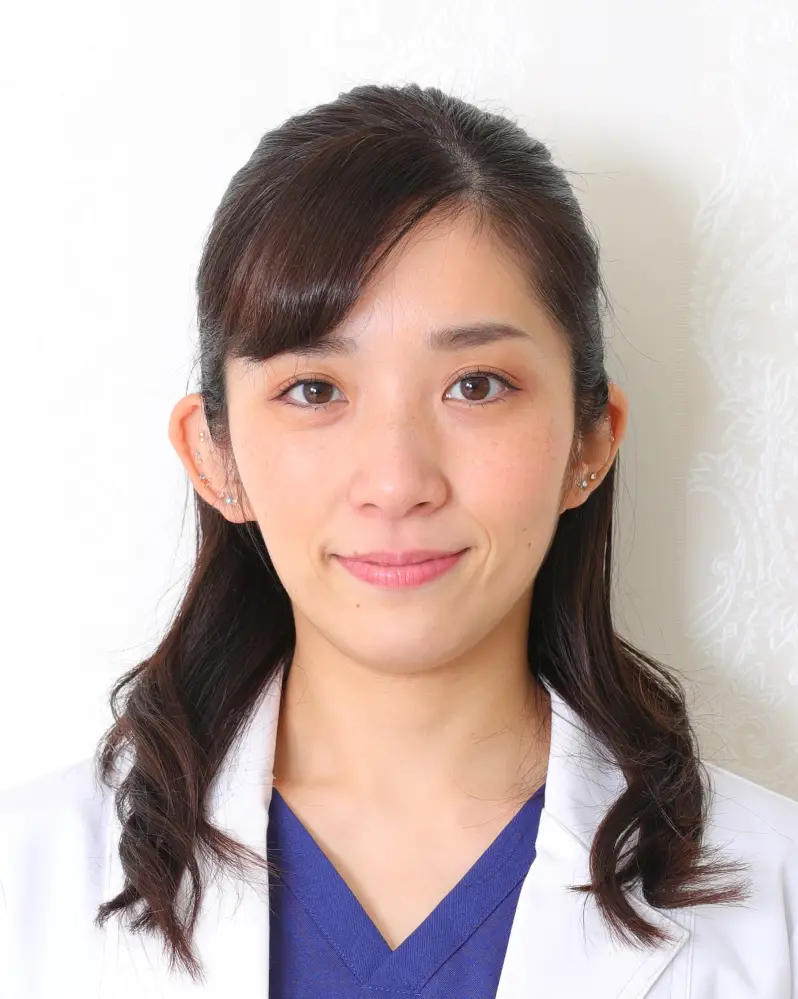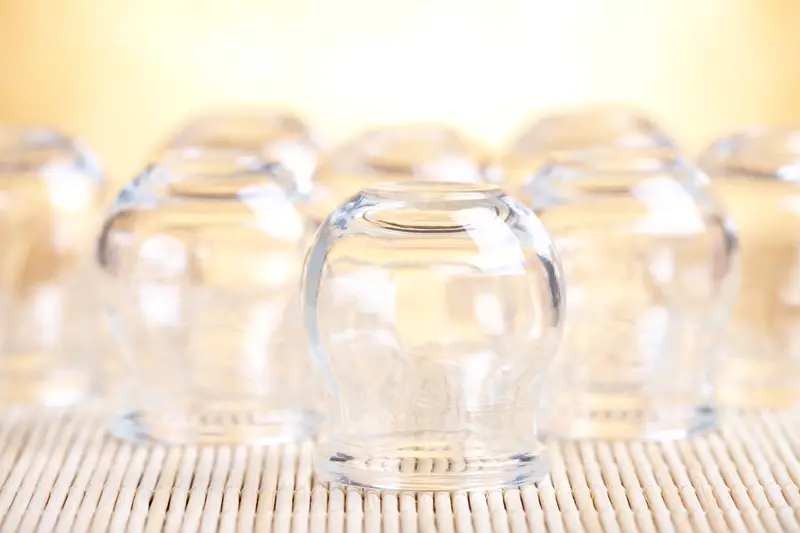Desk Workers’ Guide to Acupressure Techniques for Neck and Wrist Pain Relief
For anyone spending long hours at a desk, neck, back, and wrist tension are common complaints that can lead to chronic pain if left unaddressed. Traditional Chinese Medicine (TCM) offers acupressure techniques that can help alleviate these issues without needing to leave your desk. Acupressure can be an effective and practical solution for reducing muscle stiffness, promoting circulation, and releasing built-up tension in these areas. We consulted with Ms. Mai Sogawa, a TCM therapist, to bring you desk-friendly acupressure techniques for fast, effective relief.
Here’s how to use acupressure for neck and wrist pain relief while staying productive.
How Acupressure Eases Work-Related Pain
Acupressure, based on TCM principles, involves applying gentle pressure to specific points on the body to encourage energy flow (qi) and release muscle tension. For those sitting for extended hours, pain can stem from strained muscles, poor circulation, and compressed nerves. Applying acupressure during breaks can counteract these effects by:
- Relaxing tight muscles in the neck, back, and wrists
- Reducing inflammation and promoting blood flow
- Easing mental and physical stress accumulated during the workday
By practicing a few simple acupressure methods, you can stay ahead of these discomforts and maintain a better posture. Read more about the essential acupressure techniques here.
Best Acupressure Points for Desk-Related Pain
Here are six key acupressure points recommended by Ms. Mai for quick, desk-friendly relief from neck, back, and wrist tension. Let’s explore how to locate each point and apply pressure for maximum benefit.
1. Tianzhu (BL-10) for Neck and Shoulder Release
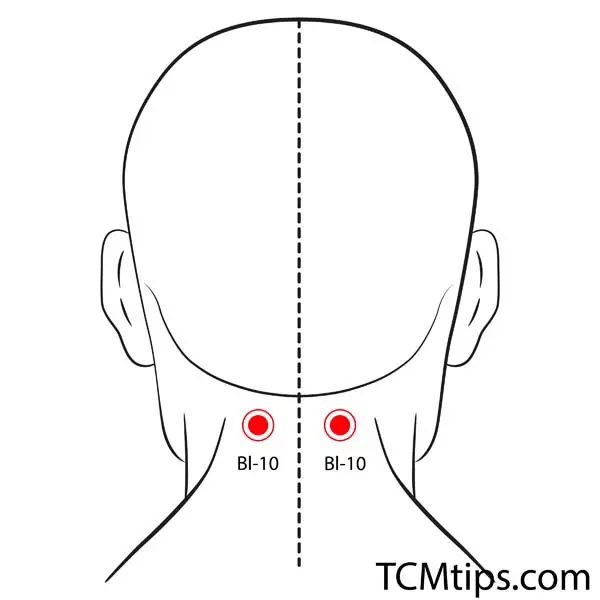
Located at the base of the skull on either side of the spine, the Tianzhu (BL-10) point is excellent for relieving stiffness in the neck and shoulder area.
- How to Find It: Place your thumbs on either side of the spine at the base of your skull, just below the hairline.
- How to Apply: Tilt your chin up gently as you apply firm pressure with your thumbs for 1-2 minutes.
- Benefits: This technique relieves neck stiffness, reduces tension headaches, and can help improve overall posture.
2. Fengchi (GB-20) for Tension Headache Relief
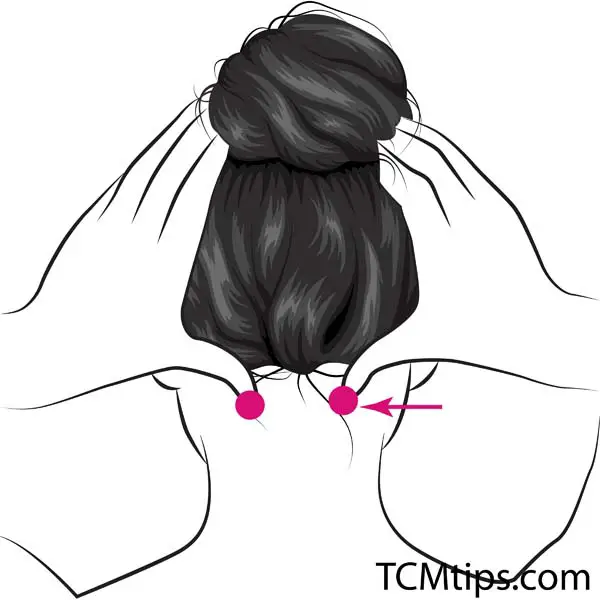
Fengchi (GB-20) is another point located at the base of the skull, positioned just outside the BL-10 points, and it’s especially helpful for relieving stress and tension headaches.
- How to Find It: Move your thumbs outward from BL-10 to where your skull meets the top of the neck muscles.
- How to Apply: With your thumbs placed on these points, lift your chin slightly upward and press for 1-2 minutes. You should feel a gentle, pleasant stimulation.
- Benefits: Fengchi is effective for tension headaches, neck stiffness, and fatigue, making it ideal for midday stress relief.
3. Jianjing (GB-21) to Release Shoulder Tension
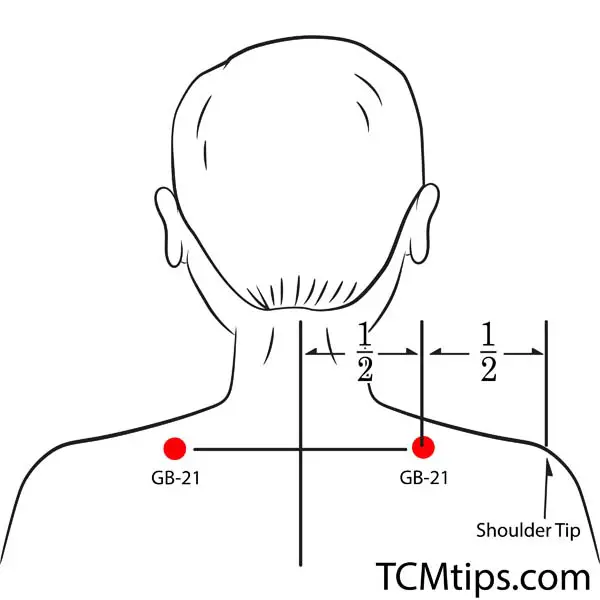
Jianjing (GB-21) is a go-to acupressure point for releasing shoulder tension and promoting relaxation in the upper back.
- How to Find It: Located at the highest point of your shoulder, between your neck and the end of your shoulder.
- How to Apply: Use your opposite hand to apply firm pressure, or try using both thumbs if flexibility allows. Press and hold for about 1 minute, breathing deeply.
- Benefits: GB-21 helps reduce tension across the shoulders and upper back, improving range of motion and easing stress.
4. Hegu (LI-4) for Wrist and Hand Relief
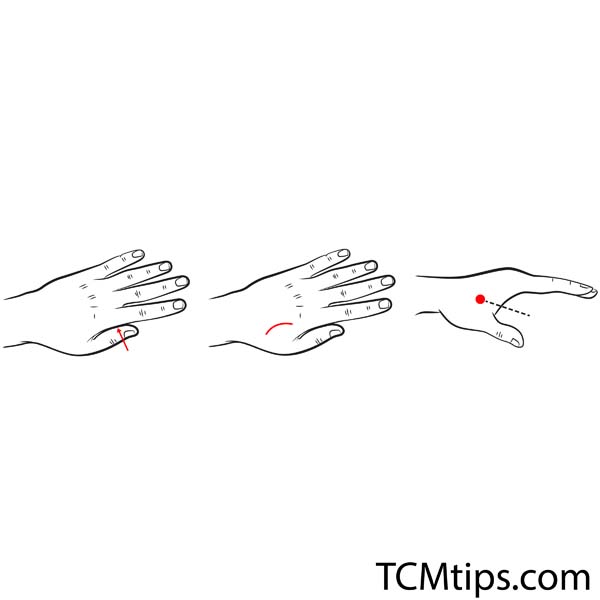
Hegu (LI-4) is a well-known acupressure point in the webbing between your thumb and index finger. It’s excellent for wrist pain, tension relief, and even boosting energy.
- How to Find It: Find the fleshy area between your thumb and index finger.
- How to Apply: Squeeze the point with your opposite thumb and index finger for 1 minute, then switch hands.
- Benefits: LI-4 relieves wrist discomfort, hand stiffness, and is also thought to help improve focus and alertness, perfect for a quick desk break.
5. Chize (LU-5) for Forearm and Wrist Tension
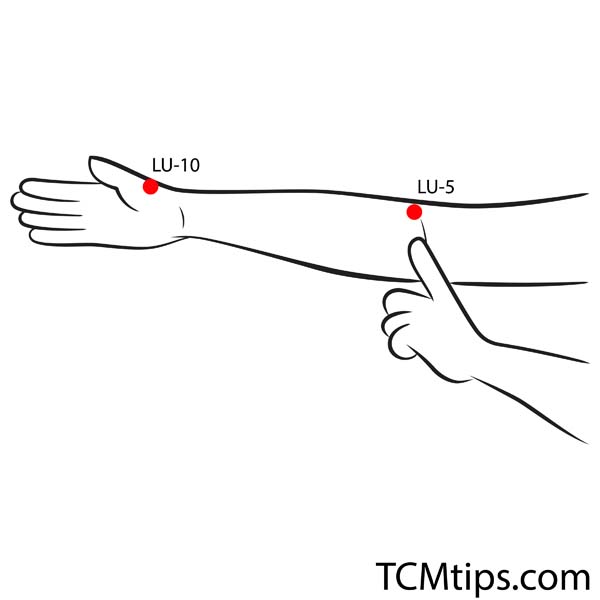
Located in the crook of the elbow, Chize (LU-5) is ideal for those who spend a lot of time typing, as it targets tension in the forearm and wrist.
- How to Find It: Bend your elbow and locate the point on the outer edge of the crease.
- How to Apply: Press and hold with your opposite hand, applying steady pressure for 1 minute. Repeat on the other arm.
- Benefits: LU-5 relieves tension in the wrist and forearm muscles, promoting better blood flow to these overused areas.
6. Shousanli (LI-10) for Elbow and Wrist Relief
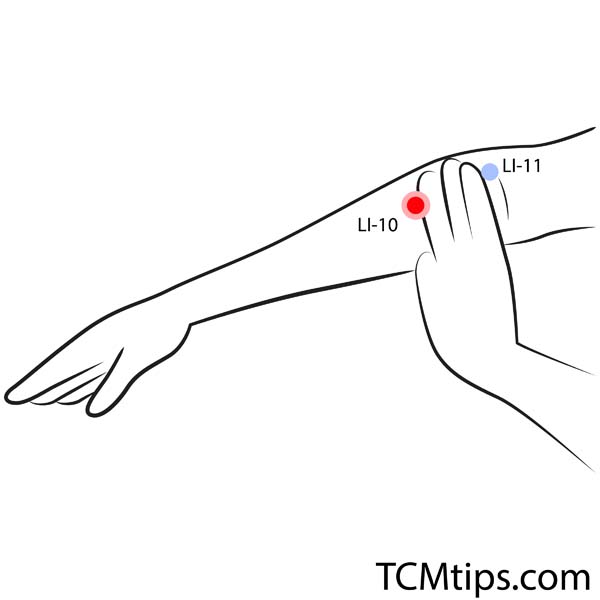
Shousanli (LI-10), located on the forearm, helps relieve wrist and elbow tension, making it an excellent choice for desk workers.
- How to Find It: From the elbow crease, measure about three finger-widths down along the outer edge of the arm.
- How to Apply: Press firmly with the opposite hand for 1-2 minutes, then switch sides.
- Benefits: LI-10 relieves strain and tension from repetitive desk tasks, reducing soreness in the wrist and improving arm flexibility.
Additional Tips for Desk-Friendly Acupressure
To make these techniques more effective, try incorporating the following tips into your daily routine:
- Take Frequent Breaks: Set reminders to apply acupressure or stretch every hour to maintain circulation.
- Practice Good Posture: Adjust your chair and screen height to reduce strain on the neck and back.
- Stay Hydrated: Drinking water helps keep muscles hydrated, which is essential for reducing muscle stiffness.
- Use Breathwork: Deep, steady breathing can enhance the relaxation effects of acupressure.
How Often Should You Use Acupressure?
For best results, try these techniques 2-3 times per day, particularly during breaks. Regular practice can lead to more sustained relief and a reduction in overall muscle tension.
Acupressure as Part of a Daily Routine
By integrating acupressure for neck and wrist pain relief into your workday, you’re not only addressing immediate discomfort but also promoting long-term wellness. With guidance from TCM practitioners like Ms. Mai, these techniques are simple, effective, and easy to perform without special equipment. Over time, acupressure can help improve circulation, reduce stress, and promote a more balanced, relaxed work experience.

Try our Anti-Aging Gua Sha Tool designed to bring out your skin’s natural glow.
Best Gua Sha Product- Anti-Aging: The tool is designed to target 11 specific aging signs such as wrinkles and sagging skin. By following the 7-step routine, users can improve skin firmness and reduce fine lines naturally.
- Enhances Skincare Routine: It works effectively with serums and lotions, boosting absorption and efficacy of skincare products.
- Visible Skin Improvement: Users can expect a smoother complexion, reduced puffiness, and a more youthful appearance.
 P. Sze
P. Sze 
